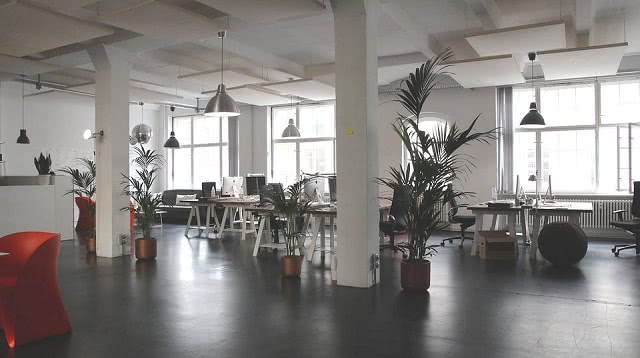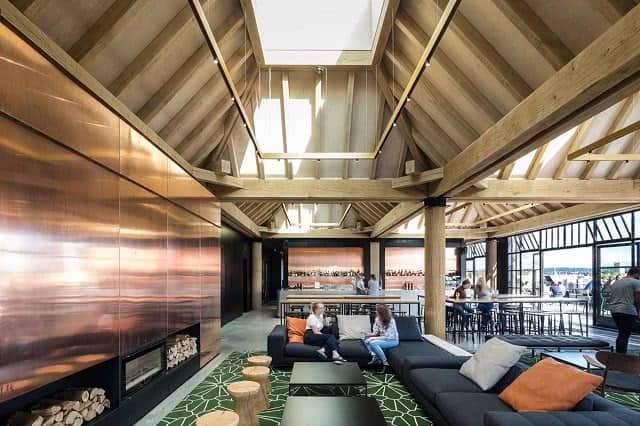Environmental pollution has higher fatality rates than malaria and HIV. It tampers with the homes of animals and land pollution alone kills over 100,000 sea mammals every year. Air pollution causes those living in areas with high air pollutants to have a 20% higher risk of death from lung cancer than others.
The fact is, both directly and indirectly, the negative effects of environmental pollution are grave and largely fatal.
But what has this to do with interior design? And how can designers help to minimise its contribution to environmental pollution? Well, interior design is all about creating beautiful spaces to improve the living standards of those who exist within the space. In that respect, protecting the environment is as important to the designer as selecting the right shade of paint.

Traditional methods of construction paid little attention to its harmful impact on the environment. Adverse environmental impacts include waste, noise, toxic generation, air and water pollution, hazardous emissions and climate change.
In fact, the construction industry still contributes to 23% of air pollution, 50% of climate change, 40% of drinking water pollution and 50% of landfill waste (European Commission). However, when it comes to designing the interiors of buildings, use of materials, functionality and innovative technologies can effectively help to minimise environmental pollution.
Air pollution
Whilst governmental efforts and initiatives are set into motion to minimise air pollution through taxes, tradable pollution permits and regulations; this is not enough. Each industry has a role to play in the collective effort of tackling pollution.
Architectures and interior designers have a number of tools at their disposal to directly reduce air pollution and subsequently improve human and animal welfare. Step one is by helping to reduce pollutant into the indoor environments.

Opting for paint and sealants that have low Volatile Organic Compound (VOC) content can significantly improve the quality of our indoor environments. When the industry as a whole makes the switch to these products, manufacturers will be encouraged, due to demand, to abort the production of toxic paint and contribute to a healthier environment.
Carefully sourcing materials can reduce demands on export with heavy reliance on oil and gas, used to transport materials across oceans and millions of kilometres of highways. These sources of pollution account for a significant portion of today’s crisis. Selecting locally produced materials reduces the time and distance of transportation.
Research shows that the incorporation of plants indoors can help to actively clean the air inside our homes, offices, schools and public buildings. Chemical emissions causing indoor air pollution include acetone, alcohols; ammonia; benzene; chloroform; formaldehyde; and xylene.
What’s notable here, is that these chemicals are found in ceiling tiles, carpets, paints, preserved wood and upholstery- to name a few. Each of which the interior designer has total control over and can be aided with ‘cleaning plants’ like Arrowhead vine, Boston Fern, Ivy and Alo Vera. The best part is that plants often double up as design elements and can create a natural atmosphere of calmness.
Clean Interior Design
An increasing number of retailers offer eco-friendly design options. Whether they share a percentage of their profit with sustainable development charities, only use locally manufactured furnishings, or actively contribute to minimising pollution as a company.
Such design elements will typically be made of reclaimed materials, sustainable wood, recycled metal and are low in toxicity. As the industry moves closer to a more environmentally friendly world, interior designers have precisely what they need to consciously minimise pollution.

Whilst it’s important for designers to consider where materials come from, how they got there and how they should be used; it’s equally important to think about the future and where such materials will end up. Striking the balance between lasting and durable design furnishings and biodegradable materials is key.
Poison to the environment, synthetic microfibres, used to replicate leather; whilst a more cost-effective option, should be avoided. There are a growing number of environmentally-friendly leather alternatives. Piñatex is a natural leather alternative made from cellulose fibres extracted from pineapple leaves. Since the leaves are a waste product from the pineapple fruit harvest- no additional resources like land and water have to go into production.
Tips for Clean Interior Design
The environmental impact of materials used in the design process should be estimated for the entirety of their life-cycle. When evaluating materials from a sustainable point of view, interior designers and architects should consider its source and production, the way in which it will be used and its long term demise. This allows both, direct and indirect environmental consequences to be accounted for.
Whilst sustainable options might not always be the most accessible and obvious solution, it’s important to do some research on what’s available. Whether it’s getting in contact with local recycling firms, or looking into the most eco-friendly suppliers available. The bottom line is, there are alternatives- they just need to be found.
The future of clean interior design
If this decade is anything like the last, we can expect a continued movement towards a more sustainable interior design industry. Advancements in the way the international community work together, combined with the necessity to minimise environmental impact, will spur on innovative technologies and eco-friendly practices.
Ultimately, interior designers should work towards integrating healthier lifestyles into their designs. The industry will take on the responsibility of creating spaces for environmentally friendly activities to occur. It has moved past simply ensuring materials are sourced appropriately and has moved towards implementing these materials in sustainable best-practice.
As ever, information is key here. The more knowledge and understanding about sustainable materials available to interior designers, the more they will be inclined to use them. Expert’s in the field will have to broaden their design capacity to be able to effectively explain the benefits of clean interior design to clients and stakeholders alike.
Alas, employing sustainable solutions and using environmentally friendly products has become a mainstay for architects and interior designers. Industry experts are at the forefront of embracing sustainability and are becoming more innovative with clean interior design. There is always more to be done, and the industry is moving in the right direction.